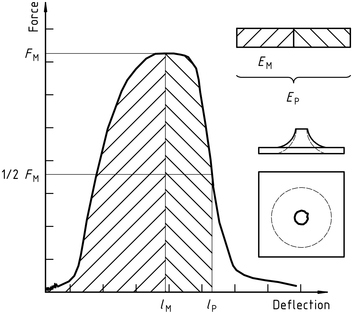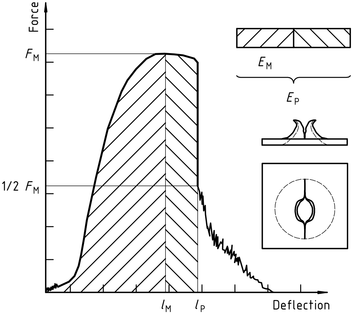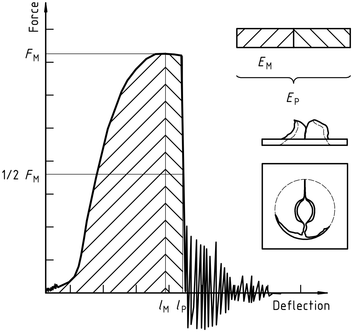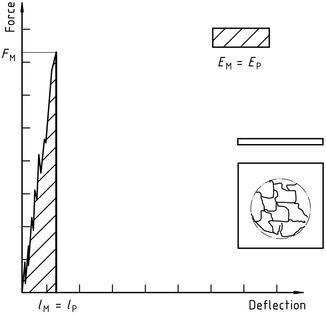ISO 6603-2-2000 “Kunststoffen – Bepaling van het lek-impactgedrag van harde kunststoffen – Deel 2: Instrumentimpacttest”
invoering
ISO (Internationale Organisatie voor Standaardisatie) is een mondiale alliantie van nationale normalisatie-instellingen (ISO-lidorganisaties). De ontwikkeling van internationale normen wordt doorgaans uitgevoerd via technische ISO-commissies. Elke aangesloten instelling die geïnteresseerd is in een onderwerp waarover een technische commissie is opgericht, heeft het recht om in die commissie vertegenwoordigd te zijn. Internationale gouvernementele en niet-gouvernementele organisaties die samenwerken met ISO zijn ook bij dit werk betrokken. ISO werkt nauw samen met de Internationale Elektrotechnische Commissie (IEC) over alle kwesties van elektrische standaardisatie.
Internationale normen worden opgesteld in overeenstemming met de regels gegeven in Deel 3 van de ISO/IEC-richtlijn.
Het ontwerp van de internationale norm dat door de Technische Commissie is aangenomen, zal ter stemming onder de aangesloten organen worden verspreid. Publicatie als internationale standaard vereist goedkeuring van ten minste 75% van aangesloten instellingen.
Please note that some elements of this part of ISO 6603 Kan het voorwerp uitmaken van een octrooirecht. ISO is niet verantwoordelijk voor het identificeren van dergelijke patenten.
De internationale standaard ISO 6603-2 is ontwikkeld door de Technische Commissie ISO/TC 61, Kunststoffen, Subcommissie SC 2, Mechanische eigenschappen.
ISO 6603-2-2000 “Kunststoffen – Bepaling van het lek-impactgedrag van harde kunststoffen – Deel 2: Instrumentimpacttest”
De tweede editie annuleert en vervangt de eerste editie (ISO 6603-2:1989), die technisch is herzien.
ISO 6603 bestaat uit de volgende onderdelen, under the general heading Plastics – Bepaling van het lek-impactgedrag van harde kunststoffen:
– Deel 1: Niet-instrumentele impacttests
– Deel 2: Instrumented impact testing
Appendices A to E of this part of ISO 6603 are for information purposes only.
1 Bereik
Dit deel van ISO 6603 specifies a test method for determining the puncture impact properties of rigid plastics in the form of flat specimens using instruments that measure force and deflection. This applies if a force-deflection or force-time plot recorded at a nominal constant firing pin speed is necessary to characterize impact behavior in detail.
ISO 6603-1 can be used if ISO 6603-1 is sufficient to characterize the impact behavior of plastics by an impact failure energy threshold based on many samples.
The purpose of this part of ISO 6603 is not to explain the mechanisms that occur at each particular point on the force-deflection chart. Deze verklaringen zijn de taak van wetenschappelijk onderzoek.
Note also Article 1 van ISO 6603-1:2000.
ISO 6603-2-2000 “Kunststoffen – Bepaling van het lek-impactgedrag van harde kunststoffen – Deel 2: Instrumentimpacttest”
2 Normatieve verwijzingen
De volgende normatieve documenten bevatten bepalingen die:, door verwijzing hierin, vormen de bepalingen van dit deel van ISO 6603. Voor gedateerde referenties, eventuele latere herzieningen of wijzigingen van deze publicaties zijn niet van toepassing. Echter, Parties to agreements based on this part of ISO 6603 worden aangemoedigd om de mogelijkheid te onderzoeken om nieuwe versies van de volgende normatieve documenten toe te passen. Voor ongedateerde referenties, van toepassing is een nieuwe versie van het bedoelde normstellingsdocument. ISO- en IEC-leden houden een register bij van momenteel geldige internationale normen.
ISO 2602:1980, Statistische interpretatie van testresultaten – mean estimation – betrouwbaarheidsintervallen.
ISO 6603-1:2000, Kunststoffen. Bepaling van het lek-impactgedrag van harde kunststoffen. Deel 1: Niet-instrumentele impacttests.
3 termen en definities
For this part of ISO 6603, de volgende termen en definities zijn van toepassing.
3.1 Botssnelheid
The speed of the firing pin relative to the support at the time of impact
Opmerking 1: De botssnelheid wordt uitgedrukt in meter per seconde (Mevr).
3.2 Force F
De kracht die door de slagpin op het monster wordt uitgeoefend in de richting van de botsing
Opmerking 1: Kracht wordt uitgedrukt in Newton (N).
3.3 Doorbuiging l
The relative displacement between the firing pin and the specimen holder begins with the first contact between the firing pin and the specimen
Opmerking 1: Doorbuiging wordt uitgedrukt in millimeters (mm).
3.4 Energie
The energy expended to deform and penetrate the specimen up to the deflection L
ISO 6603-2-2000 “Kunststoffen – Bepaling van het lek-impactgedrag van harde kunststoffen – Deel 2: Instrumentimpacttest”
Opmerking 1: Energie wordt uitgedrukt in joules (J).
Opmerking 2: De energie wordt gemeten als de integraal van de kracht-afbuigingscurve vanaf het botspunt tot de afbuiging l.
3.5 Maximum Power FM
The test process occurs with maximum force
Opmerking 1: Maximum force is expressed in Newtons (N).
3.6 Doorbuiging lm bij maximale kracht
Deflection at maximum power FM
Opmerking 1: Deflection under maximum force is expressed in millimetres (mm).
3.7 Energy to maximum power
De energie die bij maximale kracht wordt verbruikt, bereikt een afbuiging lM
Opmerking 1: De krachtigste energie wordt uitgedrukt in joules (J).
3.8 Lekdoorbuiging lP
De kracht wordt teruggebracht tot de helft van de afbuiging van de maximale kracht FM
Zie figuren 1-4 and Note 3.9.
Opmerking 1: De lekdoorbuiging wordt uitgedrukt in millimeters (mm).
ISO 6603-2-2000 “Kunststoffen – Bepaling van het lek-impactgedrag van harde kunststoffen – Deel 2: Instrumentimpacttest”
3.9 Puncture Energy
The energy consumed until the puncture deflects lP
Zie figuren 1-4 en noteer 2.
Opmerking 1: The puncture energy is expressed in joules (J).
Opmerking 2: When testing hard materials, a probe mounted at a distance from the impact tip can record the friction force acting between the cylindrical part of the firing needle and the piercing material. De overeenkomstige wrijvingsenergie mag niet in de doorsteekenergie worden opgenomen, dus de doordringende energie is beperkt tot die afbuiging, waarbij de kracht daalt tot de helft van de maximale kracht FM.
3.10 Impactmislukking
The mechanical properties of the material to be measured may be of one of the following types (zie toelichting) :
| A) | YD | yIELDING(Zero slope at maximum force), followed by DEEP drawing |
| B) | YS | (Zero slope at maximum force) then (althans gedeeltelijk) the S table cracks |
| C) | yu | yIELDING(Zero slope at maximum force) and then u unstable cracking |
| D) | New function | no yielding |
ISO 6603-2-2000 “Kunststoffen – Bepaling van het lek-impactgedrag van harde kunststoffen – Deel 2: Instrumentimpacttest”
Opmerking 1: Een vergelijking van cijfers 2 En 3 shows that puncture deflection lP and puncture energy EP are the same for failure types YS and YU. Zoals te zien in figuur 4, in het geval van storingstype YU, the deflection and energy have the same values at the maximum and at the puncture. Voor complex gedrag, see annex A.
Figuur 1 – An example of a force-deflection diagram of the typical appearance of a specimen after yielding (helling nul bij maximale kracht) followed by deep drawing and testing (gebruik van smering)

Figuur 2 – Example force-deflection diagram of failure by yield (helling nul bij maximale kracht), gevolgd door een gestage scheurgroei, en het typische uiterlijk van het monster na testen (gebruik van smering)

Figuur 3 – Example force-deflection diagram of failure through yield (helling nul bij maximale kracht) and the typical appearance (smering) of the specimen after testing

Note the natural vibration of the force detector can be seen after the unstable cracking (slagpin en weegsensor).
Figuur 4 – Example force-deflection diagram of unyielding failure followed by unstable crack propagation and typical appearance of the specimen after testing (gebruik van smering)

ISO 6603-2-2000 “Kunststoffen – Bepaling van het lek-impactgedrag van harde kunststoffen – Deel 2: Instrumentimpacttest”
Alleen het standaardinformatiegedeelte is openbaar. Om de volledige inhoud te zien, u moet de standaard via de officiële kanalen aanschaffen.
